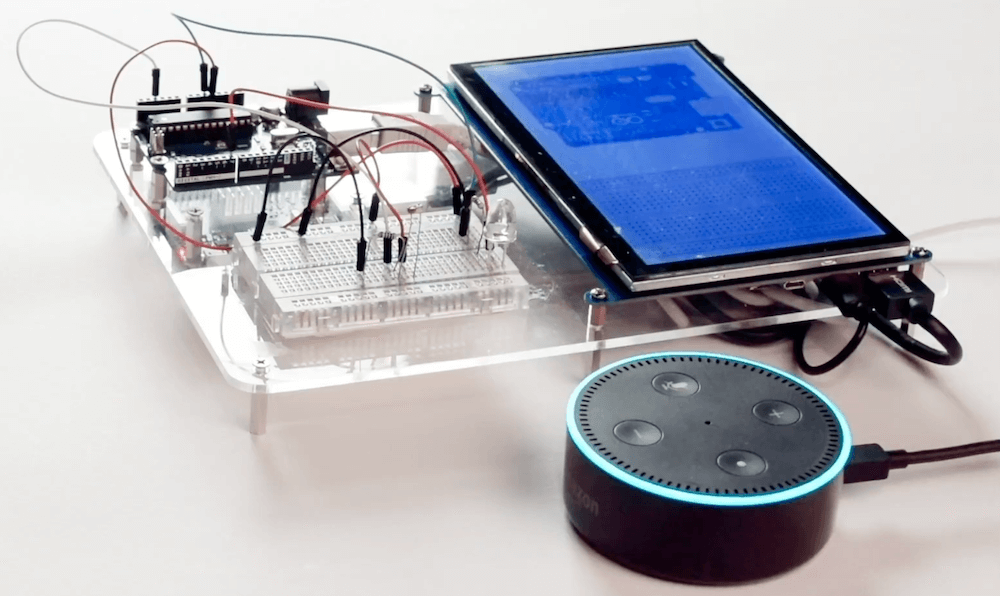
Programming an Arduino to do simple things like turn on an LED or read a sensor is easy enough via the official IDE. However, think back to your earliest experiences with this type of hardware. While rewarding, getting everything set up correctly was certainly more of a challenge, requiring research that you now likely take for granted.
To assist with these first steps of a beginner’s hardware journey, researchers at KAIST in South Korea have come up with HeyTeddy, a general-purpose prototyping tool based on dialogue.
As seen in the video below, HeyTeddy’s voice input is handled by an Amazon Echo Dot, which passes these commands through the cloud to a Raspberry Pi. The system then interacts with the hardware on a breadboard using an Uno running Firmata, along with a 7” 1024 x 600 LCD touchscreen for the GUI.
Words spoken to HeyTeddy are parsed, interpreted, and executed in real-time, resulting in physical changes to the hardware without having to write any code. Once programmed, code can be exported and used on the board by itself.
Those wishing to learn more can check out the entire research paper here.
No comments:
Post a Comment